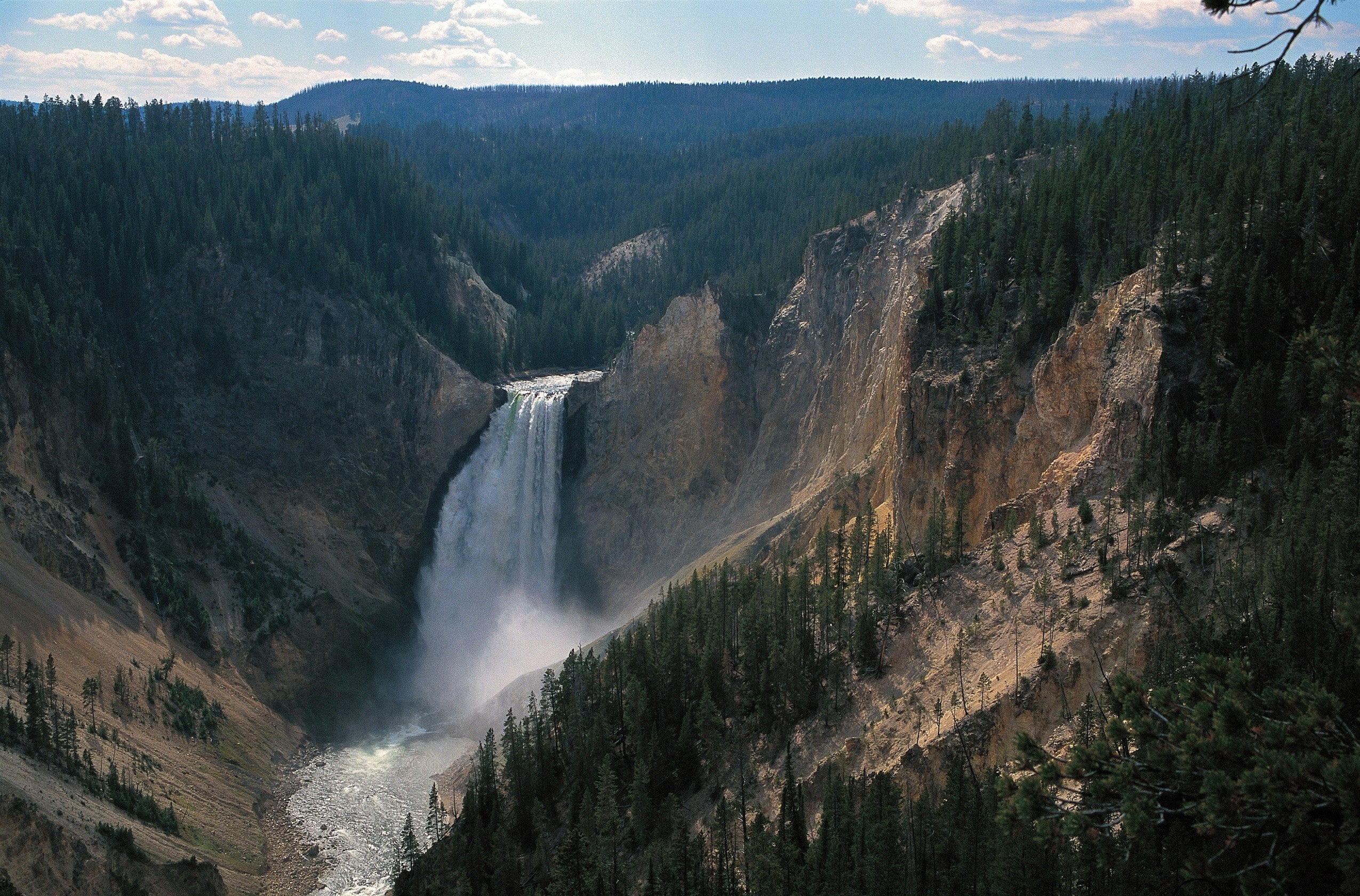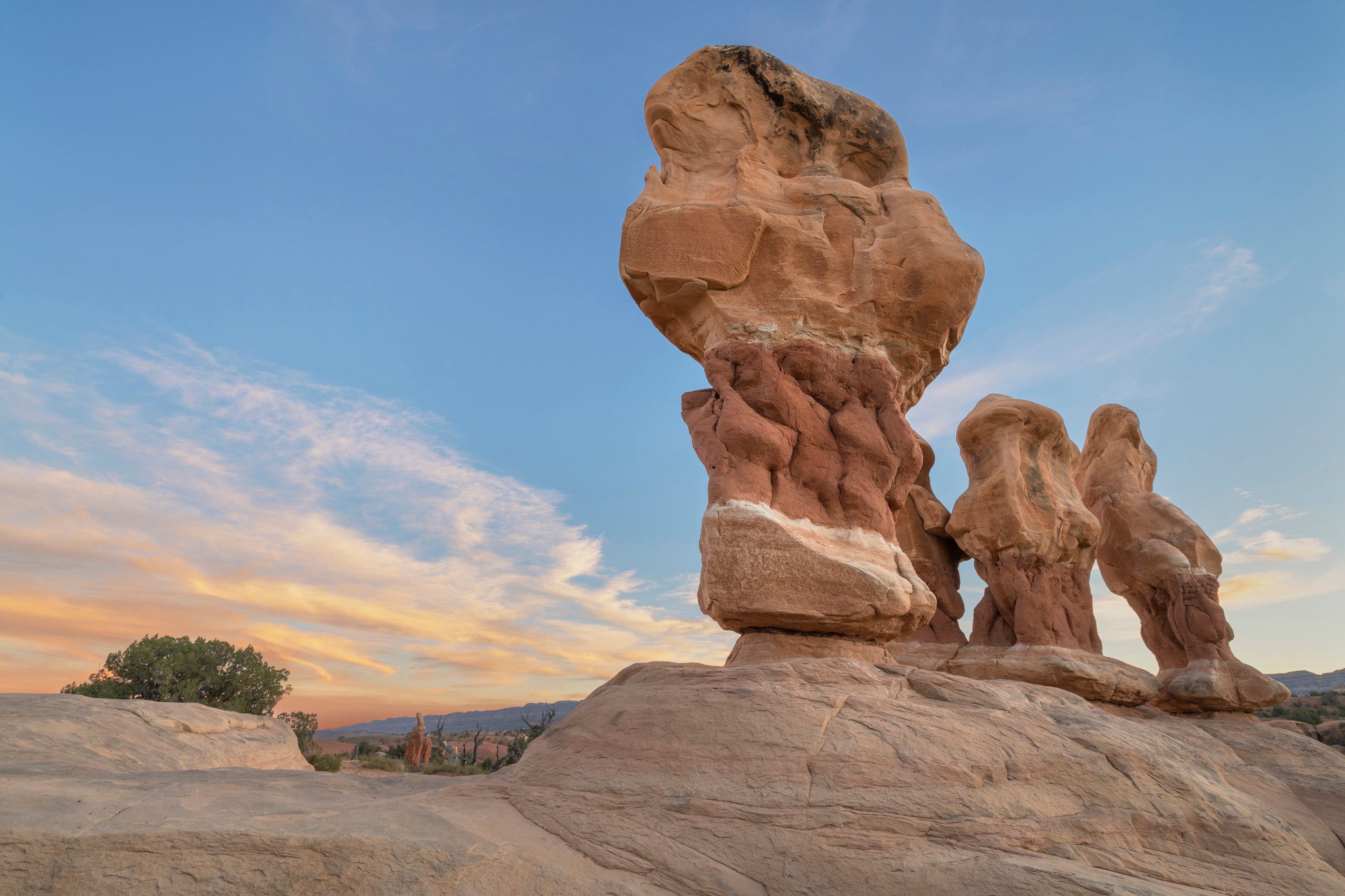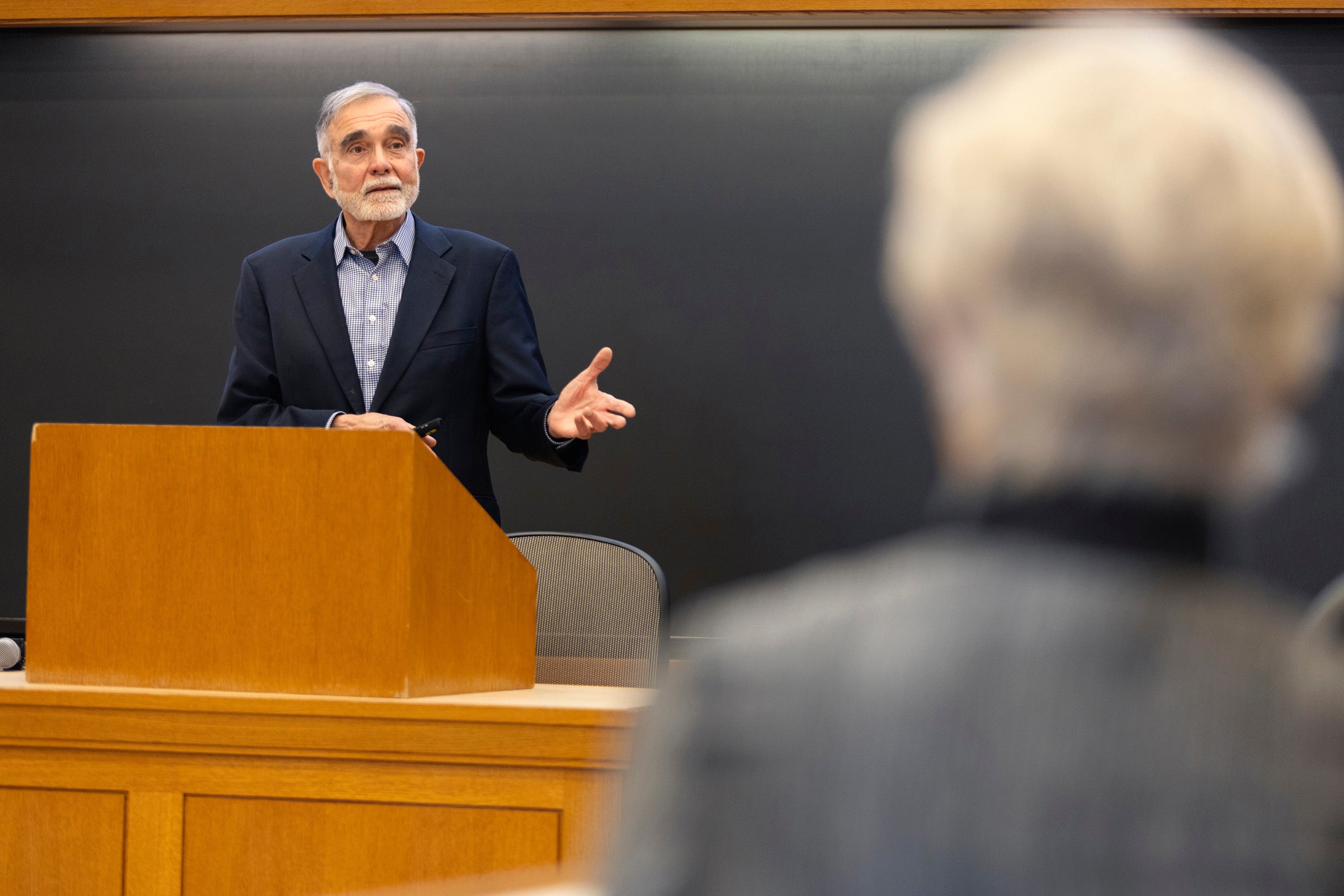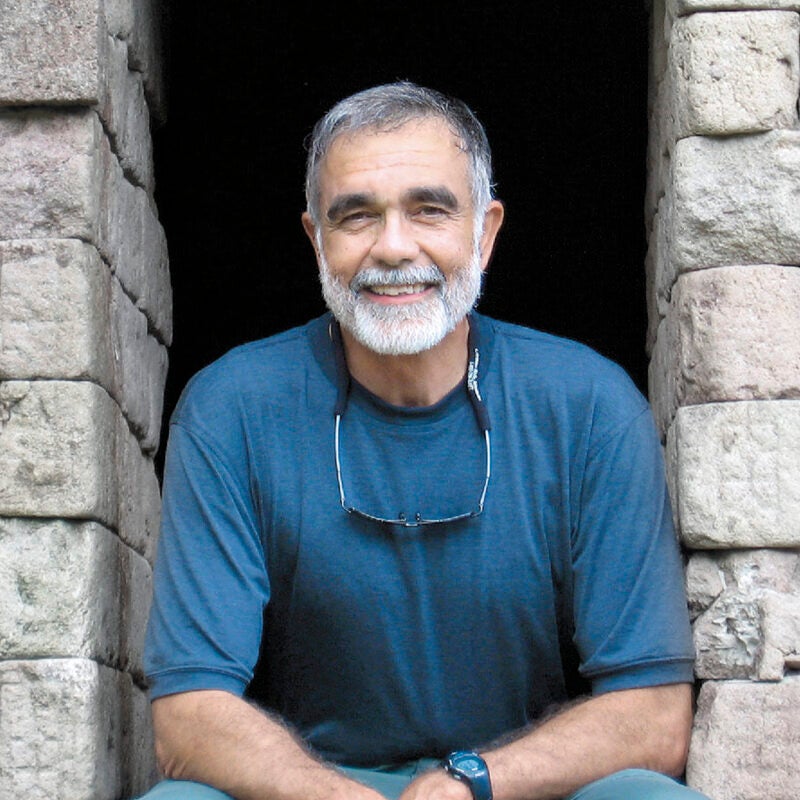Last June, when United States Sen. Mike Lee, a Republican from Utah, introduced a provision to sell millions of acres of public lands as part of the domestic policy package known as the “big, beautiful bill,” he might have anticipated pushback from environmentalists opposed to the plan.
Instead, some of the loudest critiques came from self-professed political conservatives — avid outdoorsmen who feared losing access to cherished grounds for hunting, fishing, and camping. Lee, who eventually abandoned the idea, may have been taken aback by the widespread resistance.
But not John Leshy ’69.
“Opinion polls bear this out, time and again: People love public lands,” Leshy says.
He would know. He has spent his life protecting and advocating for the more than 640 million acres of federally owned land in the U.S., first as an attorney with the Natural Resources Defense Council in the 1970s, then as a top attorney at the Department of the Interior during the administrations of Jimmy Carter and Bill Clinton, and as a law professor and academic. In a 2022 volume, “Our Common Ground: A History of America’s Public Lands,” Leshy, who is now a professor emeritus at UC Law San Francisco, tells the comprehensive story of how this shared resource came to be.

first national park. Credit: Urban Golob/Anzenberge/Redux
Today, the U.S. government owns more than a quarter of the nation’s total land area, which is managed by four agencies: the Bureau of Land Management, U.S. Fish and Wildlife Service, U.S. Forest Service, and National Park Service. From coast to coast, Alaska to Hawaii, this land contains some of the most stunning sights on earth: lakes and rivers, the tallest trees in the world, active volcanoes, caves, canyons, petrified forests, glaciers, and countless types of flora and fauna. Depending on the level of protection granted, some areas are also used for energy production, livestock grazing, or other kinds of resource extraction.
Beyond their sheer size, what makes the nation’s public lands particularly unique, Leshy says, is how accessible they are. “These lands benefit America and humanity in many ways. Generally open to all, for the most part today they are managed primarily for conservation, recreation, inspiration, and education. Every year they offer hundreds of millions of people life-changing encounters with nature, as well as activities that furnish an economic anchor for many communities.”
What Leshy’s book and career make clear is that the existence of America’s public lands is no accident — and it will take ongoing vigilance to ensure that they endure for generations to come.
What makes U.S. public lands unique is how accessible they are, says Leshy.
“Nothing in the U.S. Constitution says we must have public lands. All it takes is an ordinary act of Congress to transfer every last acre out of U.S. ownership, even iconic treasures like the Everglades or Yellowstone,” says Leshy, who received the Harvard Environmental Law Society’s Horizon Award this year. “Each new generation must decide what it wants to do with its public lands.”
‘It pushed all of my buttons’
Leshy’s career began as something of a happy accident. Growing up in rural Appalachia, he spent a lot of time outdoors as a child, but environmental law was never on his mind. In fact, the field didn’t even exist when he was a student at Harvard Law School in the late 1960s, he says.
As a newly minted attorney, Leshy first went to work at the Civil Rights Division of the Department of Justice, focusing on school desegregation cases. Three years later, having long dreamt of living in California, Leshy asked his best friend from law school if he might have any leads on a position there. By chance, the friend connected him with the Natural Resources Defense Council. Leshy helped them open their Western office and discovered his passion — advocating for public lands.
“It pushed all of my buttons,” he says. “It was nature, it was politics, it was interesting law, it was American history,” he says. “When I fell into it, I just decided that this was what I’d like to do with my life.”
Over the next three decades, Leshy worked on or led several historic efforts that expanded federally protected lands by hundreds of millions of acres. In 1977, he joined the Department of the Interior under President Jimmy Carter, where he was part of the effort that produced a landmark law that safeguarded 150 million acres of pristine Alaska wilderness, more than doubling the size of the National Park System and tripling the size of the National Wildlife Refuge System.
Later, as the top attorney under Secretary of the Interior Bruce Babbitt ’65 during Bill Clinton’s administration, Leshy oversaw a groundbreaking endeavor to use the Antiquities Act of 1906 — which gives the president the authority to create new national monuments — to expand protections on more than 5.5 million acres of Bureau of Land Management territory.

It was the first time the bureau had been given the responsibility to manage national monuments, which was, Leshy says, “a really important step because it manages the most land of the four major agencies, and this initiative laid the groundwork for future presidents to do the same,” such as Barack Obama ’91.
‘The view from 200 years of history’
Nothing about the story of America’s public lands was inevitable, as Leshy makes clear. “The breadth and character of this national asset are remarkable, considering that respect for private property and a distrust of government, particularly the national government, are baked into American culture and politics.”
Yet, from Ulysses S. Grant’s signing into law the establishment of the world’s first national park at Yellowstone, to Theodore Roosevelt’s vast expansion of publicly protected lands, to Richard Nixon’s signing of the law that created the Environmental Protection Agency, to the actions of Presidents Carter, Clinton, Bush, and Obama, American history is replete with stories of leaders and grassroots advocates from both parties acting to expand or protect this incredible resource, Leshy says.
That is partially because America’s public lands are — and have long been — very, very popular, he explains. “The view from 200 years of history shows the political system working the way it’s supposed to. It produced something the American public overwhelmingly supports.”
Leshy acknowledges that balancing demands for conflicting uses of public lands can be challenging, but he also says that there are ways of achieving these aims strategically without abandoning what makes America’s system special. “Resource extraction can be appropriate on some public lands, and existing law allows the Interior [Department] to sell or transfer parcels of land to state or local governments for various purposes such as affordable housing. That can be and has been done successfully in a small and measured way,” he says.
But in Leshy’s view, recent proposals to sell off large portions of federal lands are akin to “taking a meat cleaver” to the system. President Donald Trump has so far in this term not reduced the size of some national monuments, as he did in his first term, Leshy says, and also did not openly support Sen. Lee’s sales proposal. This, Leshy suggests, may mean Trump is paying some attention to opinion polls showing national monuments’ wide popularity. But overall Trump is zealously promoting drilling, mining, and logging on many public lands, he says. Some in the Trump administration, Leshy believes, are bent on disabling the agencies to try to convince the public that the federal government simply cannot manage the lands and therefore they ought to be transferred out of federal hands.

Politics are not the only threat to public lands, Leshy cautions: “Climate change is altering how public lands are managed, bringing more species into jeopardy, changing how we manage forests for wildfire, and more — all with uncertain outcomes. This is made worse because the Trump administration is hostile to the very idea that climate change is a serious challenge.”
A political success story
To Leshy, a career spent defending and expanding America’s public lands has been personally and professionally gratifying. But it has also helped illuminate an important American political success story that deserves more attention, he says.
“The vast majority of Americans love the fact that we’ve kept these lands, that they’re open to all, and are protected for future generations to enjoy,” he says. “It’s a ‘small d’ democratic thing, and I think that’s an important message, especially in these divisive times.”
Put plainly, he says, it shows that government can work. “There’s so much cynicism about Washington, D.C., and about how our political system is dysfunctional,” he says. “Of course, our government, like all human undertakings, has its flaws, but if we’re going to survive as a society, the political system needs to work. And the public lands show that it can produce a result people revere.”
Americans need to play their part for this success to be maintained, Leshy says. “Cynicism and apathy will change nothing. It is more important than ever for rising generations to engage with the political system that will determine their future, and that includes the future of the public lands.”
